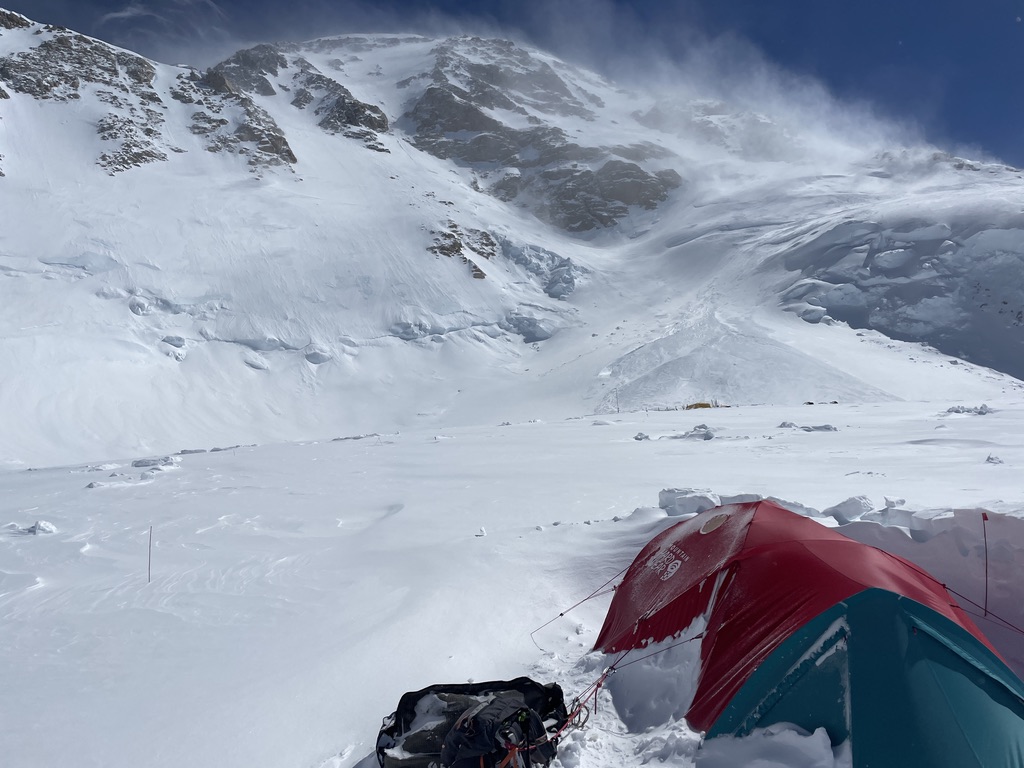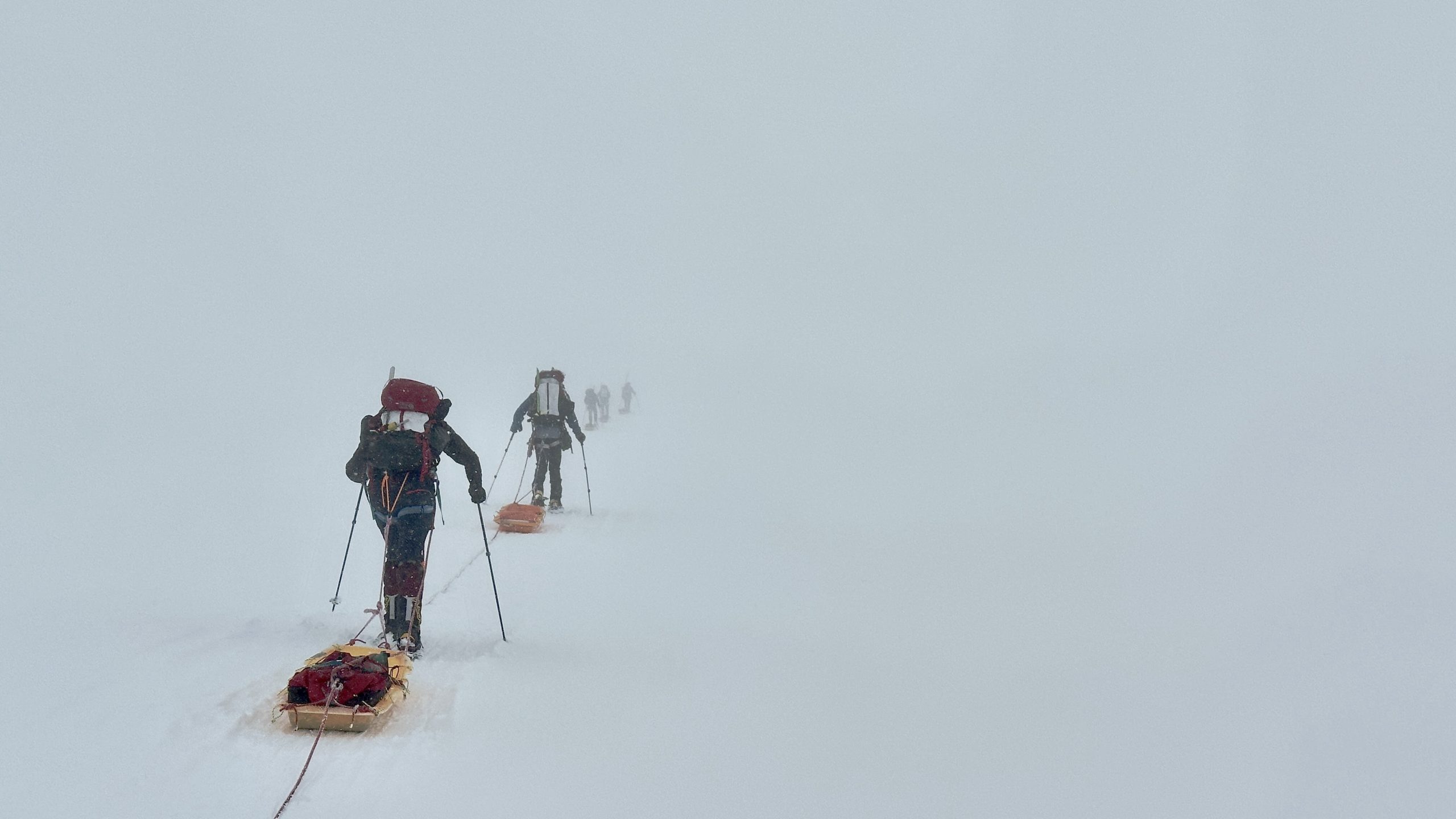Rising over 18,000 feet above the nearby tundra, Denali is infamous for its challenging weather. At 20,310 feet tall, and sitting at 63 degrees north latitude, Denali is the highest peak in the Arctic. “The Great One” can be a magnet for storms that blow in from the Gulf of Alaska or across the Bering Sea, and at times it seems to create its own weather with the summit enshrouded in lenticular clouds, a sign of the high winds hammering the mountain.
Bad weather comes and goes with beautiful sunny, calm days typically mixed in with the windy and snowy stormy days. Over the course of a 22-day expedition, most climbing teams in a more typical season will find a three- to four-day window of weather that is sufficient to take a good crack at the summit. But not this year …
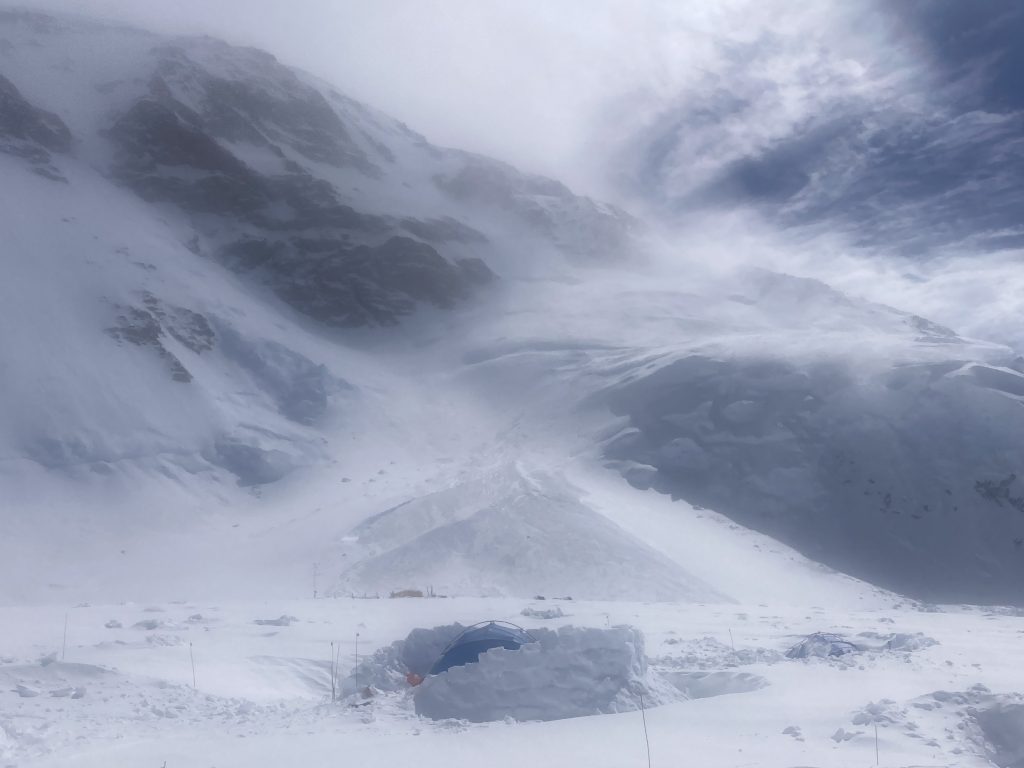
A seasoned Denali and Alaska Range guide described his weeks on the mountain in May of 2023 as being “in the apocalypse of wind and snow for days, with good weather windows of less than 24 hours barely opening to allow us to move.”
This season we had several teams who found themselves waiting at the 14,000-foot Camp, acclimatized, fit and ready to go to High Camp, but they just never got more than a 12- to 24-hour break in the weather to move to the upper mountain, much less have a chance to try for the summit. Often, teams left the mountain after sitting the weather for a week or more, and with the next forecasted weather window seven to 10 days later.
One of our most experienced Denali guides, leading his 26th team up the mountain, turned back from 11,000 feet! They lost days waiting to fly into Base Camp due to weather. They lost more days ascending the Kahiltna Glacier in difficult conditions, and then lost another week pinned down by weather at 11,000 feet. In the end, they were running out of time and there was no change in sight, so they made the difficult decision to head back down to try again on another season. Crazy!
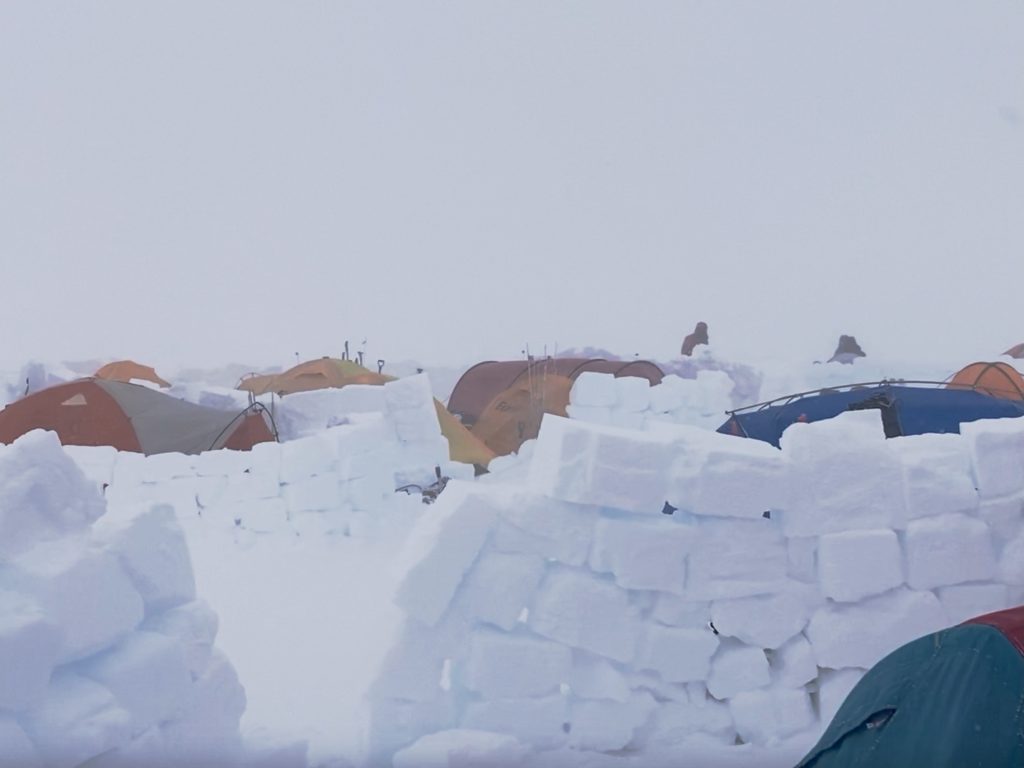
Compounding the challenge of wind and snow was the associated avalanche hazard. Deep snow and wind-loaded slopes need time to settle, and the bitter cold of this climbing season exacerbated that process. The terrain above Genet Basin at 14,200 feet often needed at least a couple of days before the likelihood of triggering an avalanche became reasonable enough for teams to climb through it.
Our last teams of the season in early July waited in wintry storms at 14,200 feet, while wind-driven snow loaded the slopes above camp with storm slabs and deep wind slabs. With no appreciable break in the weather to enable the avalanche hazard to ease up, they ultimately turned back and hiked back to Base Camp. As of mid-July, the snow had still not let up.
While parts of the country baked in extreme heat and drought, the Alaska Range saw a series of low-pressure systems move across from the Gulf of Alaska with only short high-pressure ridges passing by between large low-pressure systems. It was the most consistent series of moisture and low-pressure systems we’ve seen, and by early July, with our season wrapping up, we were approaching records set in 1963 for accumulated precipitation in Southcentral Alaska. None of this weather was unprecedented; it was just relentless throughout the entire climbing season. Ironically, the 2022 season was the complete opposite with a series of high-pressure systems for most of the season, and a greater than 70% success rate for Denali summits.
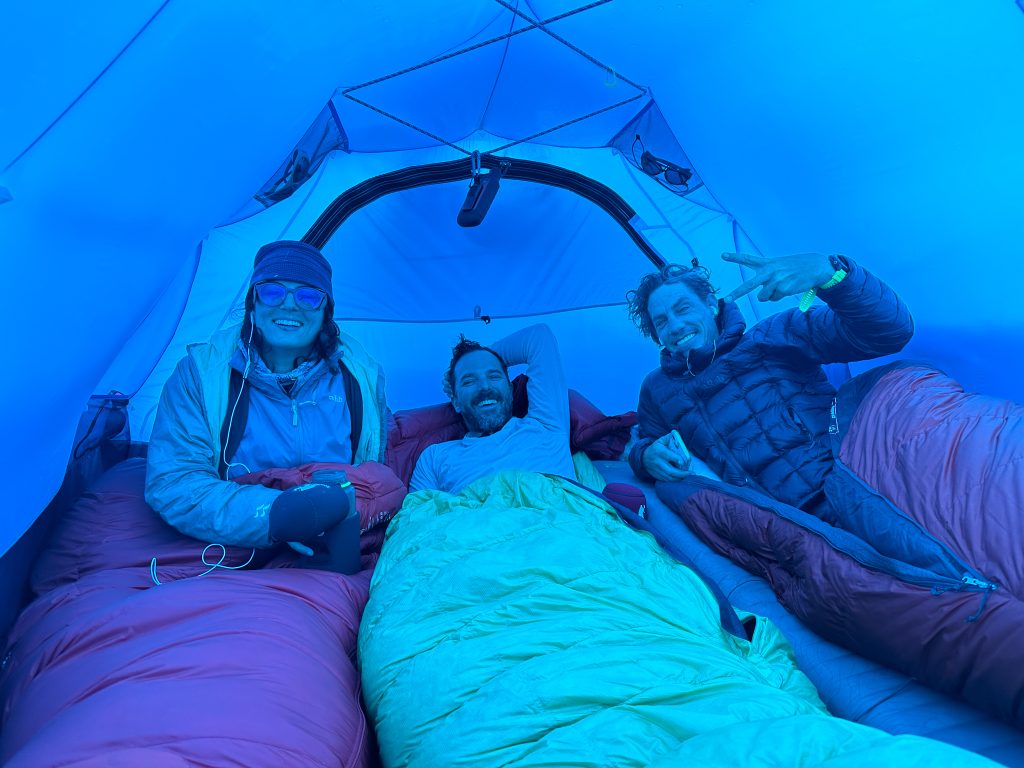
Weather forecasting has improved over the last decade, and for several years we have hired a professional mountain weather forecaster to help us, making our Alaska Range forecasts a better tool than ever. Our forecasts did help us to pick out summit windows, but maybe more importantly, this year it helped us keep our teams out of trouble as short-lived nice weather days deteriorated into high winds and heavy snow.
Mountain guides have a responsibility to make decisions that are in the best interest of our climbers, with the well-being of our guests and guides being our priority. They say that every accident is preventable, and while that might be true, the problem is that we cannot predict every accident. We do know, however, that pushing into conditions that are even a little outside of our risk controls make our systems for managing those risks brittle and increase the probability of an unacceptable outcome.
This season we saw a few other teams on Denali push to the summit out of frustration from being stuck in bad weather for days or weeks, and then return to camp with multiple cold injuries. Frostbitten fingers, toes, ears or noses are not worth the summit.
The following, as found on our website, summarizes our approach to climbing big peaks.
Our philosophy for guiding a Denali climb can be summed up with three goals:
- Everyone comes home in good health.
- Everyone has a great experience.
- Everyone stands on the summit.
We will never sacrifice our first two goals for the sake of the third …
2023 was an incredibly tough season. Congratulations to the couple of teams that did summit; however, most of our climbers did not, which was very disappointing for each individual climber, guide, and for our company as a whole. Ultimately, we’re really proud of how our climbers and guides dealt with the challenges. Part of climbing in the Alaska Range is accepting the unknown outcomes that come with trying to do hard things. It was amazing to see teams come together, work hard in trying conditions, and still have a great experience with new friends—even if they could not get on top.
